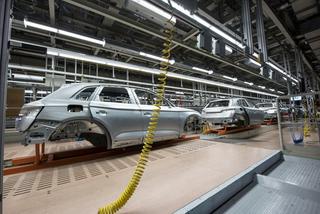Blog
Lean material handling: The role of AMRs in a lean environment

The manufacturing industry has been moving towards a lights- out approach, that is factories and warehouses operating with as little human intervention as possible. This has led the industry to adopt automation, like autonomous mobile robots (AMRs), faster than many others. Autonomous forklifts, conveyor belts, and robot arms are other common technology in a modern production facility. They load, unload, and transport goods anywhere within a facility, making it more efficient by avoiding many lean wastes - like transportation and waiting.
Lean material handling in production and in the warehouse
A large percentage of facilities use lean manufacturing to improve their operations and lower costs. The EPA states: “…lean production techniques often create a culture of continuous improvement, employee empowerment, and waste minimization [in addition to] driving rapid, continual improvement in cost, quality, service, and delivery.”
A lean material handling system can improve the efficiency of production by eliminating wasteful activities such as locating materials and retrieving parts. Many facilities enhance the benefits of automation and lean material handling by also using a call system such as Kanban, where a signal is triggered to order more parts when a cell or machine depletes the materials it needs.
The need for automation
Many manufacturers are changing their approach to automation, and replacing lift trucks and conveyors with AMRs. With an increased demand for speed and accuracy, and more complex procedures, facilities have been forced to automate processes. The cost of errors and delays can be expensive and disruptive to the production process. So, any technology that can minimize these types of problems is a benefit.
The demands on the logistics and delivery systems companies use is changing rapidly, too. Companies need to find new ways to be efficient and keep up with consumer demands. For example retailers are using smaller trucks to deliver more direct to consumer orders, often in congested urban areas. Many shipments now move through delivery networks as mixed pallets, instead of full ones, which means more customization and piece-picking. Technology helps to ensure the right sequence to complete the palletizing steps. Automation is the best way for a warehouse to deliver these customized solutions that customers are looking for.
Autonomous mobile robots in the warehouse
A warehouse is an ideal environment for Autonomous Mobile Robots. And with the cost of automation now being more affordable, small-to medium-sized companies can invest in it.
The grid design of a warehouse makes it easy for automated vehicles to navigate. Repetitive tasks that are boring or unsafe for human labor are often easy for AMRs to handle, making the facility much safer. They can transport goods, and combine other steps such as loading and unloading, which increases efficiency.
This enables AMRs to have flexible navigation for a larger variety of potential applications and autonomy, even in tight, crowded spaces. The technology also enables autonomous mobile robots to follow the order picking process, with response to human gestures.
Better materials flow is the key to manufacturing efficiency and, in the end, delivering products to customers on time. Many manufacturers are now employing various forms of automation to improve materials handling with AMRs being central to achieving the maximum benefit of their investments.






